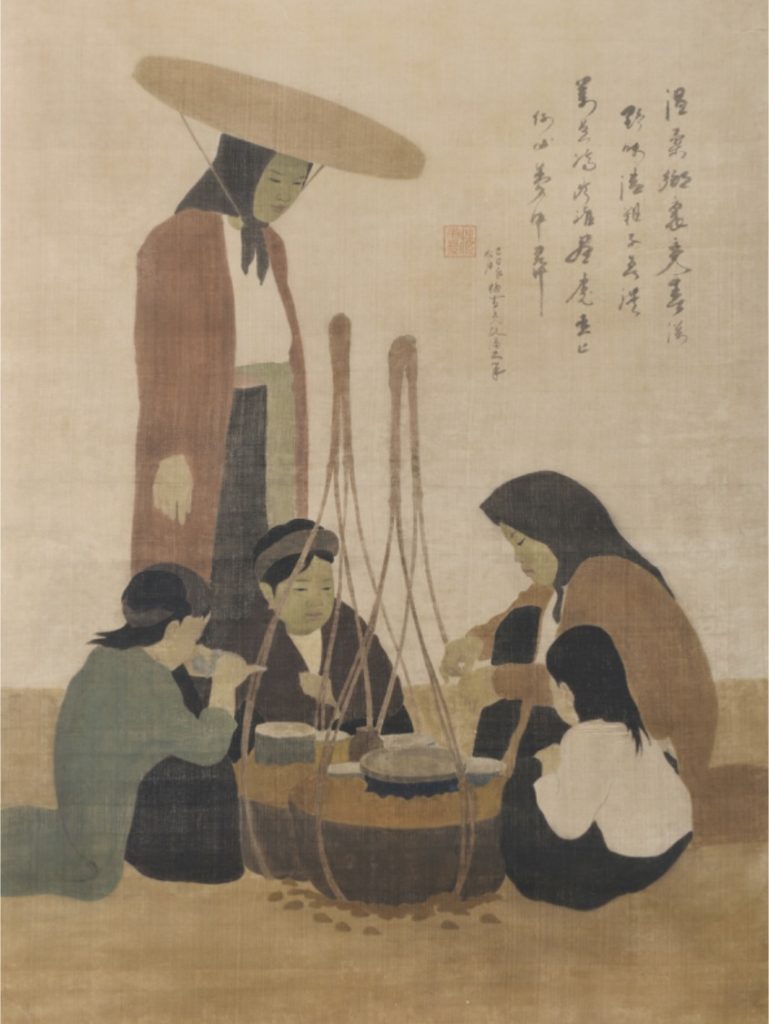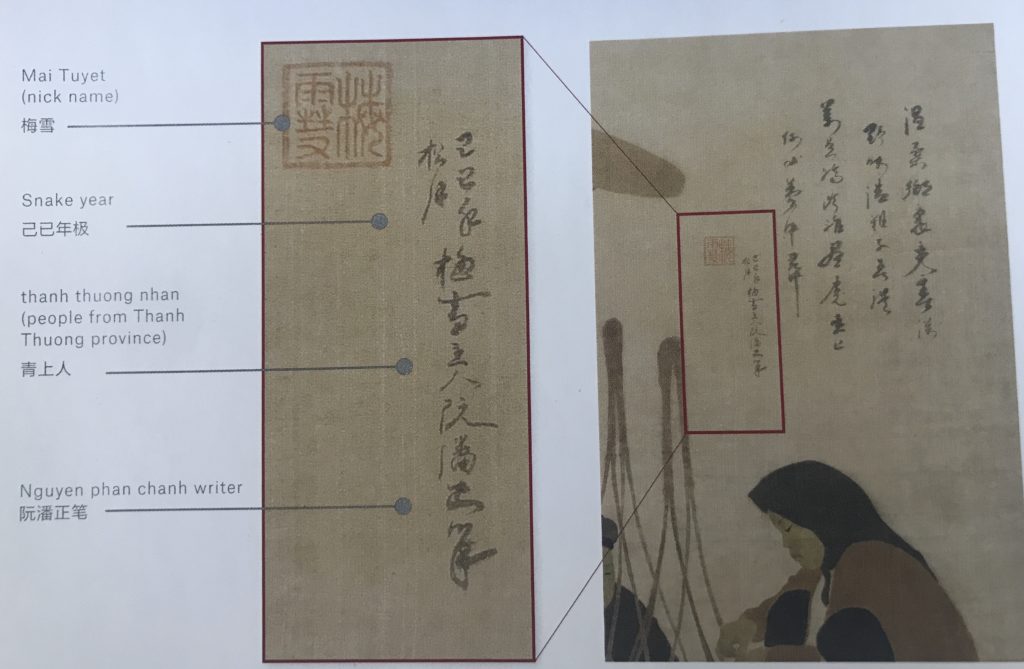Nguyen Phan Chanh – “La Marchande de Ôc”
A historic manifesto, a homage to the beauty of a current everyday scene, an expression of so singular a genius, the current lot presented is an indisputable masterpiece and icon of 20th century Vietnamese pictorial production.

A historic manifesto began in 1929, when Victor Tardieu (1870-1937) proposed to have the Ecole des Beaux-Arts de l’Indochine (Hanoi) participate in the 1931 Exposition Coloniale Internationale de Paris. He knew that he was making a crucial bet: the success of the Ecole founded four years earlier would either be affirmed or not; for Tardieu it was necessary to “judge definitively to what extent the course set out (should) be maintained”.
To achieve this, Tardieu called upon the best talents of the École and selected, notably, six works on silk by Nguyen Phan Chanh including our La marchande de Oc. This work on silk contributed towards the great success of the Vietnamese section of the Exposition which earned admiring articles in the French press, notably in L’Illustration. The success of the Exposition was immense and attracted several million visitors.
A homage to the beauty of a current everyday scene: in this magical work, the painter furnishes us with a glorious scene from the simple life lived by the modest people from or around Hanoi. The gouache and the ink are applied with a softness wholly characteristic of the painter; their solid colours and muted chestnut tones evidence his compassion for a world which he cherished and described in minute detail: children and women consuming “oc luoc ” (boiled snails) sold by a street vendor.
After being soaked in rice water of water infused with pepper (to make the snails disgorge any earth), the snails are cooked with the addition of ginger and leaves from lemon trees and lemongrass. Always faithful to his subject matter, the artist shows us the woman on the right extracting a snail from its shell with what one could identify as a thorn from a grapefruit tree (which would add flavour to the dish).

After being soaked in rice water of water infused with pepper (to make the snails disgorge any earth), the snails are cooked with the addition of ginger and leaves from lemon trees and lemongrass. Always faithful to his subject matter, the artist shows us the woman on the right extracting a snail from its shell with what one could identify as a thorn from a grapefruit tree (which would add flavour to the dish).
The work is still in its original Gadin frame, Gadin being the Parisian framer who had the exclusive contract to frame all the works sent first to the Exposition Coloniale and then to Agindo in Paris. Of note is the Japanese inspired character of the frame, its light shellac amplifying the golden-brown aspect of the frame and underlining the matte aspect of the painted silk.
Even the mounting of the silk with its larger upper border is characteristic of the early works of this artist. Of particular note is the large size of the work (88 x 65 cm.) which exceeds the usual (65 x 50 cm.) dimensions of later works by this artist in, for example, 1931-1932.

Our gouache and ink on silk also contains a very unusual poem in Chinese by Phan Chanh, which we have studied elsewhere.
Jean-François Hubert